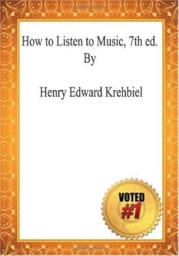

How to Listen to Music, 7th ed. (1896)
by Henry Edward Krehbiel


The viola is next in size to the violin, and is tuned at the interval of a fifth lower. Its highest string is A, which is the second string of the violin, and its lowest C. Its tone, which sometimes contains a comical suggestion of a boy's voice in mutation, is lacking in incisiveness and brilliancy, but for this it compensates by a wonderful richness and filling quality, and a pathetic and inimitable mournfulness in melancholy music. It blends beautifully with the violoncello, and is often made to double that instrument's part for the sake of color effect - as, to cite a familiar instance, in the principal subject of the Andante in Beethoven's Fifth Symphony.🏁
Global Leaderboard
| # | Player | Time | Duration | Accuracy | WPM | pp | |
|---|---|---|---|---|---|---|---|
| 1 | |||||||
| 2 | |||||||
| 3 | |||||||
| 4 | |||||||
| 5 | |||||||
| 6 | |||||||
| 7 | |||||||
| 8 | |||||||
| 9 | |||||||
| 10 |


The viola is next in size to the violin, and is tuned at the interval of a fifth lower. Its highest string is A, which is the second string of the violin, and its lowest C. Its tone, which sometimes contains a comical suggestion of a boy's voice in mutation, is lacking in incisiveness and brilliancy, but for this it compensates by a wonderful richness and filling quality, and a pathetic and inimitable mournfulness in melancholy music. It blends beautifully with the violoncello, and is often made to double that instrument's part for the sake of color effect - as, to cite a familiar instance, in the principal subject of the Andante in Beethoven's Fifth Symphony.🏁